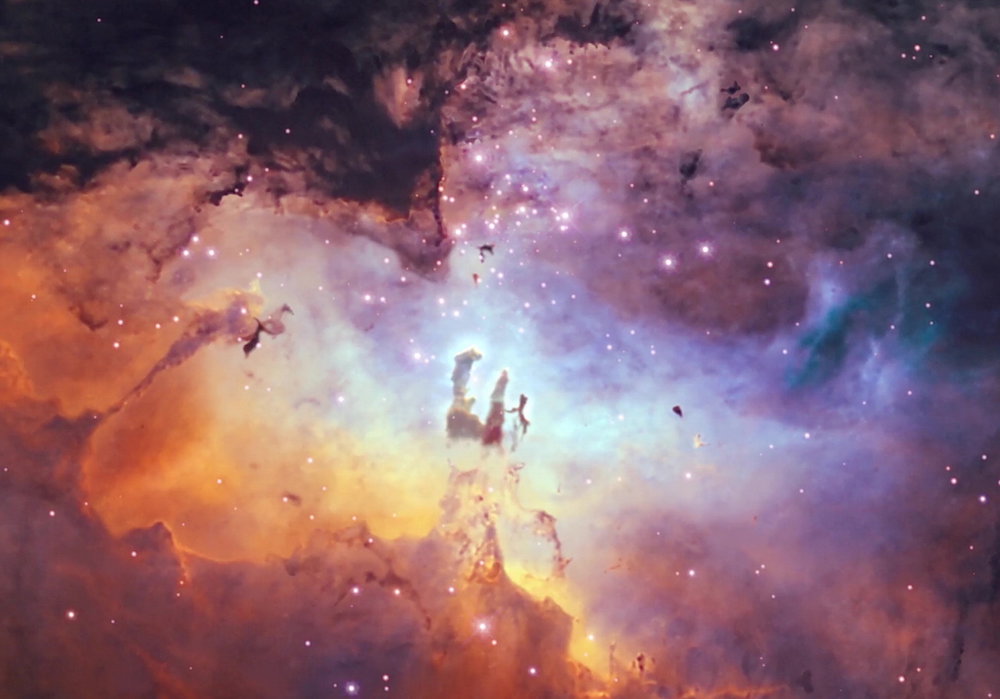The Pillars of Creation

A team at NASA has unveiled a breathtaking new visualization of the Pillars of Creation, a stunning space formation made famous by NASA’s Hubble Space Telescope in 1995. These ethereal structures, located at the heart of the Eagle Nebula, have captivated astronomers and the public alike for decades.
The new 3D visualization, is a combination of data from the Hubble Space Telescope and NASA’s cutting-edge James Webb Space Telescope. The visualizer presents a detailed multi-wavelength movie that allows viewers to explore the towering star-birthing structures in three dimensions. This immersive experience goes beyond the flat, two-dimensional images typically captured by telescopes, taking viewers on a journey through the pillars’ intricate structures. Having multiple space telescopes that view different aspects and layers is what gives us the ability to reconstruct these object more clearly.
NASA noted that this new visualization demonstrates how two of the world’s most powerful space telescopes work together to provide a more comprehensive portrait of the pillars. Hubble captures objects glowing in visible light, which are at thousands of degrees, while Webb’s infrared vision, sensitive to cooler objects at just hundreds of degrees, penetrates through dust to reveal stars embedded within the pillars.

“When we combine observations from NASA’s space telescopes across different wavelengths of light, we broaden our understanding of the universe,” said Mark Clampin, Director of the Astrophysics Division at NASA Headquarters in Washington. “The Pillars of Creation region continues to offer us new insights that hone our understanding of how stars form. Now, with this new visualization, everyone can experience this rich, captivating landscape in a new way.”
The Eagle Nebula, home to the Pillars of Creation, stretches 9.5 light-years across and lies in the Sagittarius Arm of the Milky Way in the constellation Serpens. The towering pillars span more than twice the distance from our sun to its nearest star, making them an awe-inspiring feature of our galaxy.